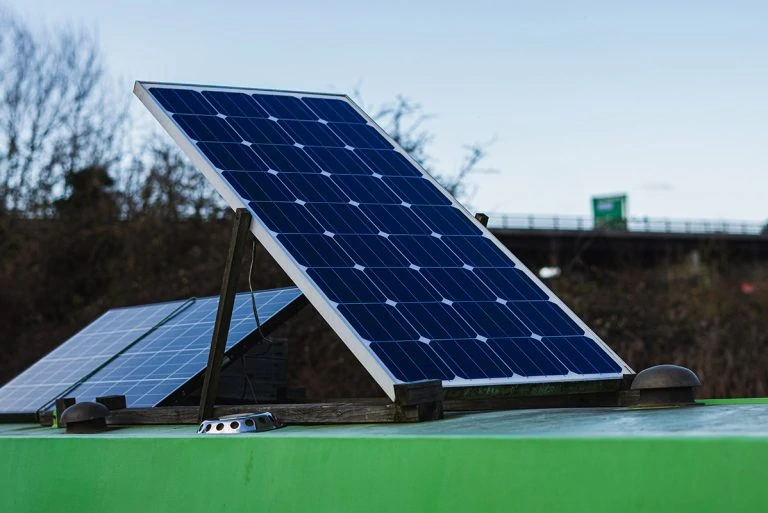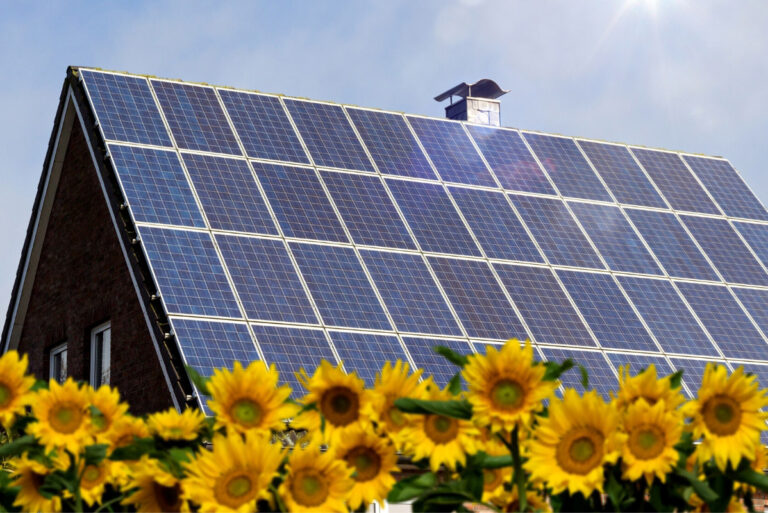Use these solar battery charging basics to understand how you can use a solar panel to charge a battery.
When trying to solar charge batteries, it is essential first to understand the several steps involved and the essential components that must also be there for the charging process to occur.
Main Stages Involved in Charging a Solar Battery
Here are the four main stages involved in solar battery charging basics that one needs to comprehend when charging batteries using solar energy:
1. The Bulk phase (first stage)
The bulk phase is primarily the initial stage of charging a battery using solar energy. This first stage starts when the sun shines or when the generator is turned on.
The bulk phase will initiate when the battery reaches a low-charge stage, and that is usually when the charge is below 80%.
In this stage, the solar panel puts into the cell as much amperage as possible. The voltage in the batteries rises gradually as they absorb the electricity.
See Related: DIY Solar Generator Guide
2. Absorb Stage (second stage)
The second stage of battery charging is known as the absorb stage. This stage is achieved when the batteries reach a charge of 14.4 to 14.8 volts or when the charge level is between 80 to 90% full.
Primarily, when the batteries reach this charge percentage, it enters into the absorb stage which also depends on the charge rate.
The above charge rate is basically for lead-acid batteries. The second stage halts as soon as the number of amps entering the batteries reaches a certain number that is pre-set or the programmed time elapses.
3. The Float stage (third stage)
The third stage comes immediately after the absorb stage. This stage is initiated when the charge controller lowers the voltage to a specific pre-set value. The float stage is achieved when the batteries reach a charge level of 100%. It is essential for you to know how to program your controller well.
4. The Equalization stage (fourth stage)
The final stage or the Equalization stage is a controlled overcharge stage which is done periodically.
The process of charging batteries using solar energy or the photovoltaic is different from using the mains power and needs to be approached differently. The difference occurs since the initial energy from the sun is not always available, or it comes in fewer amounts than the required.
The low costs of photovoltaic solar modules and its increasing efficiency are increasing the demand for this kind of renewable energy.
Components to a Solar Charging System
Some of the vital components of a solar charging system include:
1. Solar Panels
One of the essential components of the solar charging system is the solar panel. A solar panel is a device that is designed to absorb sunlight to generate electricity or heating power. It is the component that helps collect energy from direct sunlight and then converts it into electricity.
There are several types of solar panels. The three most common types are Monocrystalline cells, polycrystalline cells and amorphous or thin-film solar cell. It is essential to understand the basic features including the watts, cost and space you require before you decide the one to pick.
Here is help on how to build your own solar system.
2. Solar Charge Controller
The solar power generated by the solar panel is received by the solar charge controller. A solar charge controller is a component that helps manage the power that is going into the battery store from the solar panel.
It safeguards the deep cycle batteries from being overcharged during the day. It also ensures that power does not go back towards the solar panels overnight which can drain the batteries.
Solar charge controllers’ primary function is to manage power, but it may offer additional capabilities including load control and lighting. Thus, when the solar charge controller receives the solar supply, it then regulates the electricity and current directed to the batteries to ensure proper battery charging occurs.
A quality photovoltaic charge controller must have the pre-defined charge modes suit for each type of battery including flooded lead acid or AGM. It is vital to ensure that the input current and maximum voltage ratings are higher than the output of the solar array feeding it when selecting a solar charge controller.
There are numerous charge controller options to choose from including professionally configured solar panel or the charge controller kits that can help ensure that your components will work well together.
When charging batteries with solar energy, one should use a controller when the rated amperage of the solar panel is above 1% of the battery capacity. It is essentially the rule of the thumb for this procedure.
There are two main types of controllers in the market which include on/off and Pulse Width Module (PWM).
The On/off controller switches the power from solar panel off when the voltage of the battery reaches a preset level. It also turns it on when the voltage drops.
PWM controller is different as it allows the voltage to continually rise and then maintain it at a level that is high but steady.
3. Power Inverter
Another vital element is the power inverter. A power inverter is an electrical apparatus that helps convert direct current (DC) to alternating current (AC).
It is not part of the solar charging system but a primary add-on element that changes 12 v DC power to 120 v AC to power AC components and channels in your RV.
4. 12 Volt Battery Bank
The battery acts as a storage bank for the power generated from the solar panels. The cells can either be 12 v or 6 v deep cycle batteries provided that the output is 12 volts.
5. Battery Monitoring System
Another optional piece of equipment is the battery monitoring system. The battery monitoring system monitors functions involving battery voltage measurement, load activity and charge status.
It also controls the charging and discharging processes of the battery to prevent it from over-charging or under-charging to increase its shelf life.
6. Wiring
Copper wiring is another crucial element. Be sure to have copper wires with different thicknesses that help you connect the solar panels, batteries, charge controller, and an inverter.
7. Cutoff Switches
Cutoff switches are connected between various components to disconnect the elements for safety and maintenance reasons effortlessly.
8. Fuses
The last but not the least components are high amperage fuses of between 100 Amp and 250 Amp. The fuses are required to prevent electrical faults and component damage and are usually placed between the battery and the inverter connections.
Now you know how a solar system works to charge a battery
Solar battery charging basics are essential to anyone using solar energy system to help them understand how to use a solar panel to charge a battery. I hope this article has offered you valuable solar battery charging basics insights.
What do you think of our solar battery charging basics and instructions? Please let us know if you found our definition helpful.











